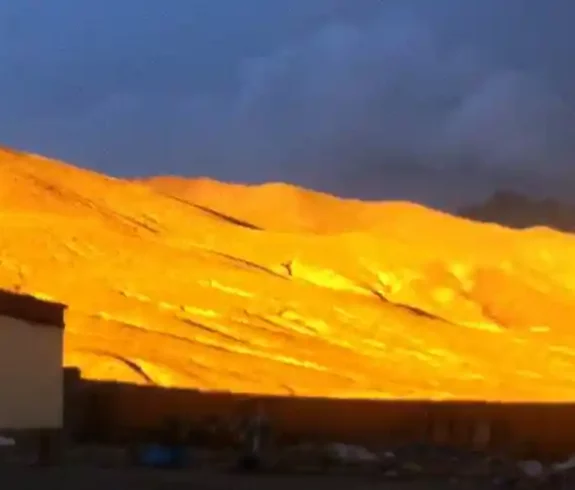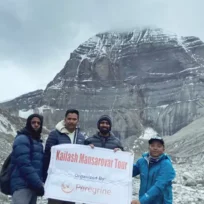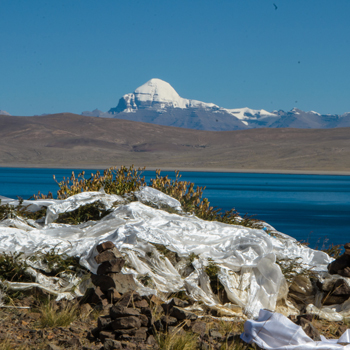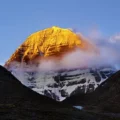Dirapuk, often called “Drirapuk” or “Dira-puk,” marks a pivotal stop along the revered Mount Kailash kora. This pilgrimage circuit draws devotees from diverse spiritual backgrounds – Tibetan Buddhism, Hinduism, Jainism, and Bon. Nestled on the north face of Mount Kailash, Drirapuk offers stunning views of the mountain’s majestic beauty, weaving together spiritual significance and natural wonder.
A High-Altitude Haven
At an elevation of approximately 5,210 meters (17,093 feet), Drirapuk is the highest point where pilgrims rest overnight during the traditional three-day kora. Its unique location provides unparalleled views of Mount Kailash’s north face, considered by many to be the most sacred and powerful vantage point. As trekkers navigate this challenging terrain, they find peace and refuge in Dirapuk’s tranquil atmosphere. The monastery and its surrounding landscape provide a sanctuary of solace, inviting pilgrims to pause for quiet reflection, offer heartfelt prayers, and strengthen their bond with the divine amidst the majestic beauty of Mount Kailash.
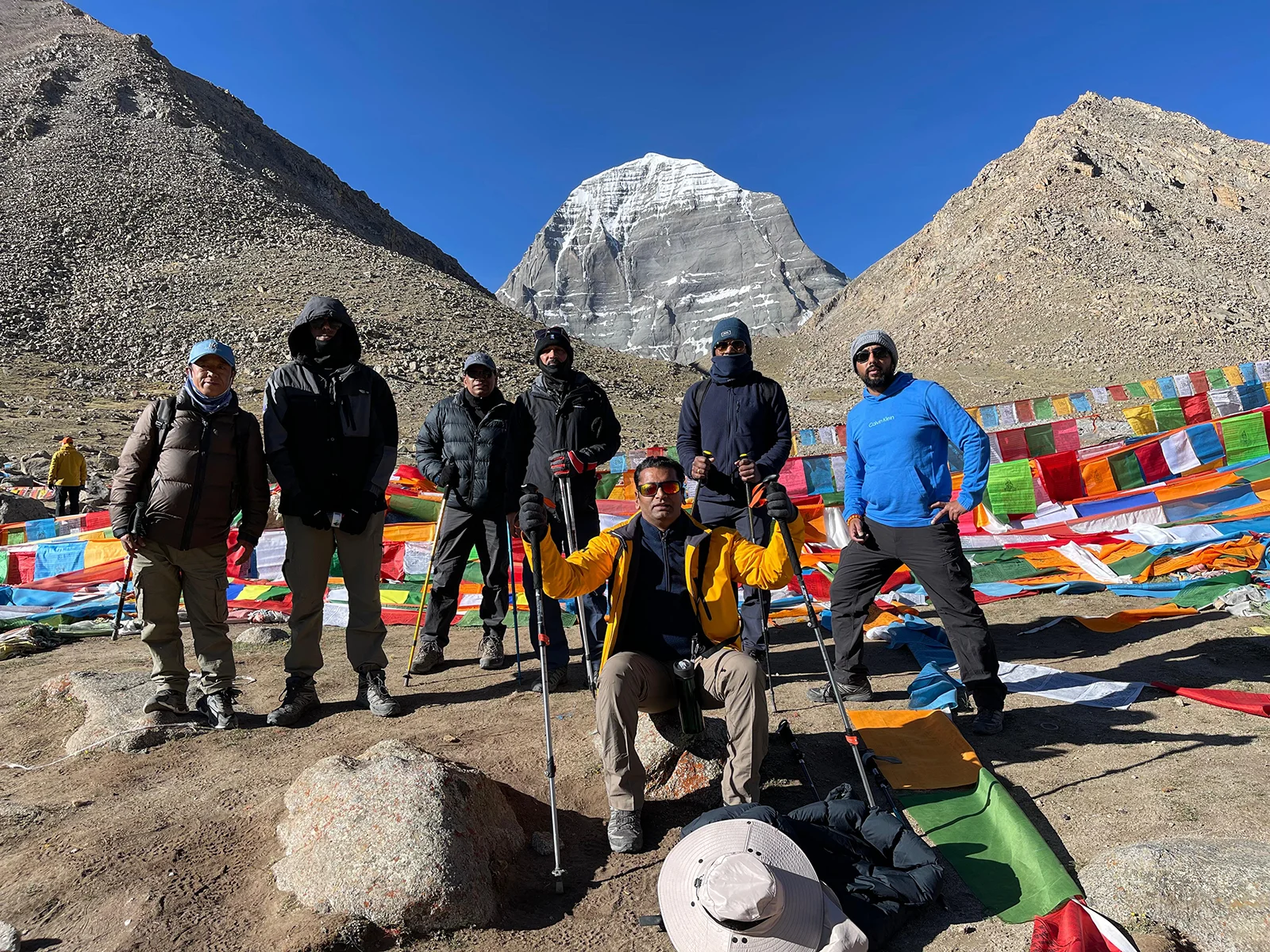
Beyond the Climb: Dirapuk’s Deeper Meaning
The Dirapuk Mount Kailash trek is undeniably demanding, but the rewards reach far beyond the physical trip. Drirapuk opens a doorway to a deeper understanding of Mount Kailash’s spiritual significance. Ancient legends and stories echo through the surrounding landscape, enhancing the mystical aura of this sacred place.
Geographical and Climatic Features
Dhirapuk, perched on the sacred Mount Kailash Kora, showcases nature’s grandeur at its finest. Pilgrims undertaking the Dirapuk Mt Kailash trek experience a landscape sculpted by many geological forces and a climate that demands respect. Understanding this place’s unique environment is critical to a safe and rewarding tour.
A Landscape of Ancient Origins and Spiritual Resonance
The landscape surrounding Tara-Puk evokes awe and wonder. As you trek towards Dirupak, the terrain unveils a tapestry of natural wonders. Glacial valleys carve their way through the mountains, shimmering high-altitude lakes dot the landscape, and rushing streams crisscross the rocky expanse. The predominantly rocky and barren terrain, dotted with tenacious patches of vegetation, evokes feelings of isolation and reverence. This stark beauty underscores the spiritual significance of Mount Kailash and the resilience of life in even the harshest environments.
Mount Kailash: The Ever-Present Guardian
Throughout your Dirapuk trekking adventure, the majestic Mount Kailash dominates the horizon. Its snow-capped peak seems to pierce the heavens, acting as a beacon of spiritual energy, drawing pilgrims from all walks of life. The sun’s rays paint the mountain’s slopes in an ever-changing display of colors, from dawn’s golden hues to the fiery glow of sunset. Witnessing this spectacle against Mount Kailash’s imposing silhouette is a moment of profound connection with the sacred.
A Climate of Extremes: Preparing for the Elements
The climate in Dirupak mirrors the drama of the landscape. Temperatures swing dramatically within a day, and unpredictable weather patterns require thorough preparation.
- Summer (June-August): Daytime temperatures can reach a comfortable 15°C (59°F), but nighttime temperatures plummet below freezing. Expect rain showers and the occasional snowfall.
- Autumn (September-November): Drier and colder air settles in, with average daytime temperatures hovering around ten °C (50°F). Snowstorms increase in frequency and intensity.
- Winter (December-February): Heavy snowfall and bitterly cold temperatures, often plunging below -20°C (-4°F), make Tara-Puk inaccessible during winter.
- Spring (March-May): The snow melts, but the weather remains fickle. Expect a mix of sunshine, snow flurries, and strong winds.
Essential Gear
Ensure a smooth Dirupak trek by packing essential gear. Ensure your safety and comfort by including these essentials:
- Warm Layers: Pack various clothing layers to adapt to Dirapuk’s ever-changing conditions: moisture-wicking thermal base layers, insulating mid-layers for warmth, and a waterproof outer shell to shield yourself from wind and precipitation.
- Sturdy Footwear: Choose high-quality hiking boots with good ankle support and traction to navigate the rocky terrain confidently.
- Sun Protection: Even at high altitudes, the sun’s rays can be intense. Remember to underestimate the sun’s intensity at high altitudes: Shield your skin and eyes from the fierce, high-altitude sun by packing sunscreen, sunglasses, and a hat.
- Cold-Weather Accessories: A warm hat, gloves, and a scarf are your best friends in the chilly conditions and unexpected weather changes that Tara-Puk can throw your way.
Spiritual Significance: Unveiling Dirapuk’s Sacred Aura
Dirapuk isn’t just another stop on Mount Kailash Kora; it’s a place where spiritual energy vibrates in the air. Its unique perch on the mountain’s north face and the countless legends surrounding it hold deep meaning for many faiths. For pilgrims who undertake the Dirapuk Mount Kailash trek, the experience transcends the physical trip, transforming into a profound spiritual pilgrimage.
A Sacred Crossroads: Where Faiths Converge
Dirupak welcomes seekers from various spiritual traditions, offering a common ground for their quest for enlightenment and blessings.
- Tibetan Buddhism: In Tibetan Buddhism, Mount Kailash is the sacred home of Demchok (Chakrasamvara) and Dorje Phagmo (Vajravarahi), powerful deities representing the harmonious balance of wisdom and compassion. Pilgrims circumambulate this revered peak, a practice believed to cleanse their spirits and accumulate positive karma.
- Hinduism: Hindus venerate Mount Kailash as the abode of Lord Shiva, the deity responsible for destruction and transformation. At Dirupak, they offer prayers and seek blessings from Lord Shiva, often focusing their devotions at the Dirupuk Gompa (monastery).
- Jainism: For Jains, Mount Kailash marks where their first Tirthankara (spiritual leader), Rishabhadeva, achieved moksha (liberation). Tara-Puk serves as a poignant reminder of this significant event, providing a space for deep reflection and spiritual practice.
- Bon: Predating Buddhism in Tibet, the Bon religion also holds Mount Kailash in high esteem. Dirapuk remains an important pilgrimage site for Bonpo practitioners, who perform unique rituals and ceremonies here.
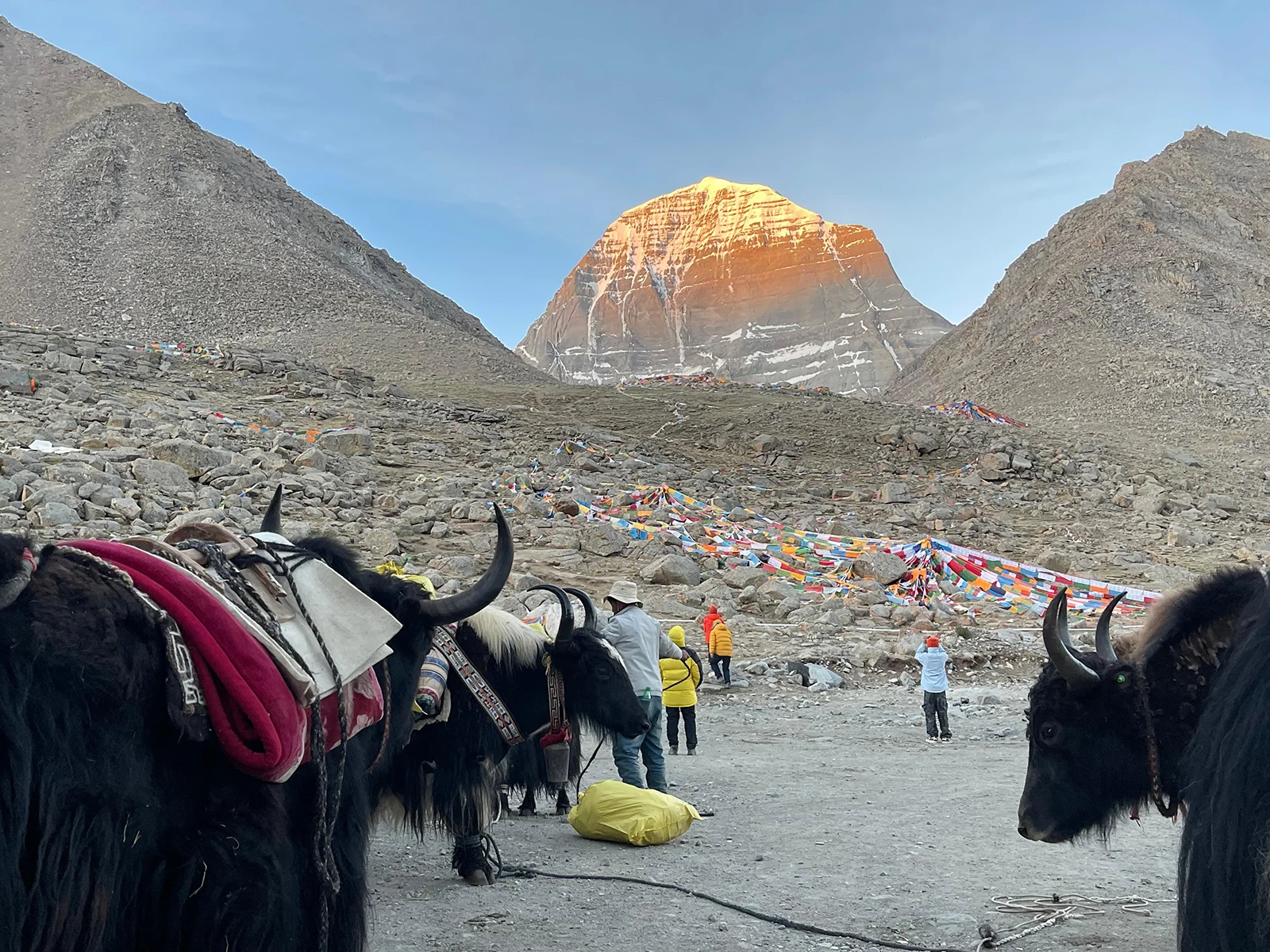
Legends and Lore: Dirupak’s Stories of the Divine
The Spiritual significance of Dirapuk is deeply rooted in ancient folklore and time-honored tales. These narratives infuse the Tara-Puk experience with enchantment and profound importance.
- Milarepa’s Cave: Legend has it that the great Tibetan yogi Milarepa meditated in a cave near Dirapuk, attaining enlightenment and leaving his handprint on the rock as a testament to his spiritual trip. Today, pilgrims flock to this cave to seek blessings and inspiration from Milarepa’s example.
- The Face of Compassion: The north face of Mount Kailash, which you can see clearly from Tara-Puk, is said to resemble the face of Chenrezig (Avalokiteshvara), the embodiment of compassion. It adds another layer of spiritual meaning to the Dirupak experience.
- The Sky Burial Site: Tara-Puk is also home to a sky burial site where Tibetan Buddhists perform traditional funeral rites. Though unfamiliar to some, this practice powerfully reminds people of the impermanence of life and the natural cycle of birth, death, and rebirth.
The Dirapuk Pilgrimage Experience: A Journey of Mind, Body, and Spirit
Dirapuk is a pivotal point on Mount Kailash Kora, offering pilgrims a unique blend of spiritual practices, cultural encounters, and natural beauty. Let’s explore what awaits you during your stay at this sacred site.
A Day in the Life of a Dirapuk Pilgrim
A typical day at Dhirapuk follows a gentle rhythm that aligns with the spiritual nature of the kora.
- Morning: The day often begins with early morning prayers and meditation at the Dirapuk Gompa (monastery). Pilgrims chant mantras, walk mindfully around the monastery, or quietly contemplate Mount Kailash’s majestic presence.
- Midday: After a simple breakfast, some pilgrims hike to nearby sacred sites, such as Milarepa’s Cave or the sky burial site. Others choose to rest, write in their journals, or connect with fellow pilgrims.
- Afternoon: The afternoon often includes more prayer or meditation, and enjoying the breathtaking views of Mount Kailash from Dhirapuk.
- Evening: As the sun sets, pilgrims gather for another round of prayers or ceremonies. As the sun sets on Dirupak, a sense of community and shared purpose fills the air. Pilgrims gather to swap tales, reflect on their day’s adventures, and prepare for the next stage of their transformative kora around Mount Kailash.
Rituals and Activities at Dirapuk
Several unique rituals and activities enhance the spiritual significance of the Dirapuk pilgrimage:
- Kora: Circumambulation is the heart of the Mount Kailash pilgrimage. Pilgrims walk clockwise around the mountain, spinning prayer wheels and chanting mantras.
- Prostrations: Some pilgrims practice full-body prostrations, a physical act of devotion where they lie flat on the ground and extend their arms.
- Prayer Flag Offerings: Colorful prayer flags adorn the Tara-Puk landscape. Pilgrims often add their flags to these collections, sending their wishes and prayers into the wind.
- Meditation: Dhirapuk’s serene atmosphere creates an ideal environment for meditation. Pilgrims find quiet corners to reflect on their spiritual tour and connect with the divine.
The Spiritual Essence of Dirapuk
Dirapuk’s location on the northern face of Mount Kailash amplifies its spiritual power. Pilgrims believe this vantage point offers the mountain’s most potent views, enhancing the kora’s transformative potential. Many experience deep peace and connection to the divine while in Dhirapuk. The fusion of physical exertion, awe-inspiring landscapes, and devoted spiritual practices fosters transformative energy long after leaving Dirupak.
Dirapuk Accommodations: Rustic Comfort in a Sacred Place
Rest and recovery become essential after a day of challenging trekking along the Dirapuk Mount Kailash trail. Dirapuk accommodations might offer little comfort but provide a warm and inviting haven for tired pilgrims and trekkers.
Where to Stay in Dirapuk
You have a few choices for lodging in Tara-Puk, each catering to different budgets and preferences:
- Guesthouses: These cozy lodges offer basic rooms with shared bathrooms. They are a popular choice for budget-minded travelers and those who enjoy the company of fellow adventurers.
- Monastery Guesthouses: The Dirapuk Gompa (monastery) welcomes pilgrims with dormitory-style accommodations. While these rooms offer the most basic amenities, they provide a unique opportunity to stay within the monastery’s sacred walls.
- Tents: Some trekking agencies offer camping options for a closer connection to nature. Remember, camping requires additional gear and preparation.
What to Expect: Amenities in Dirapuk
Amenities in Dirupak are simple, reflecting the remote and rugged nature of the area. Here’s what you’ll typically find:
- Basic Sleeping Quarters: Most accommodations offer simple beds with warm blankets or sleeping pads.
- Shared Bathrooms: Bathrooms are usually shared amongst guests and may not have running water.
- Communal Dining Areas: At some guesthouses and the monastery, you can gather with fellow pilgrims in communal dining areas to enjoy simple, nourishing meals.
- Limited Electricity: Electricity is often available for a few hours in the evening, but rely on something other than it to charge your devices.
Packing Tips for a Comfortable Dirapuk Stay
Correctly packing is critical to enjoying your time in Dirupak, given the limited amenities.
- Sleeping Bag: Nights can be cold, even in summer, so a warm bag is necessary.
- Headlamp or Flashlight: Since electricity is limited, bring your light source for after-dark navigation.
- Toiletries: Pack all your essential toiletries, including biodegradable soap and toilet paper.
- Hand Sanitizer: Maintain good hygiene with hand sanitizer and wet wipes at high altitudes.
- Snacks and Water Purification: Supplement the basic meals available in Dhirapuk with your snacks and a water purification method to ensure a healthy and hydrated trek.
- First-Aid Kit: A well-stocked first-aid kit can be a lifesaver for treating minor injuries and ailments.
- Cash: There are no ATMs in Dirupak, so be sure to bring enough money to cover your expenses.
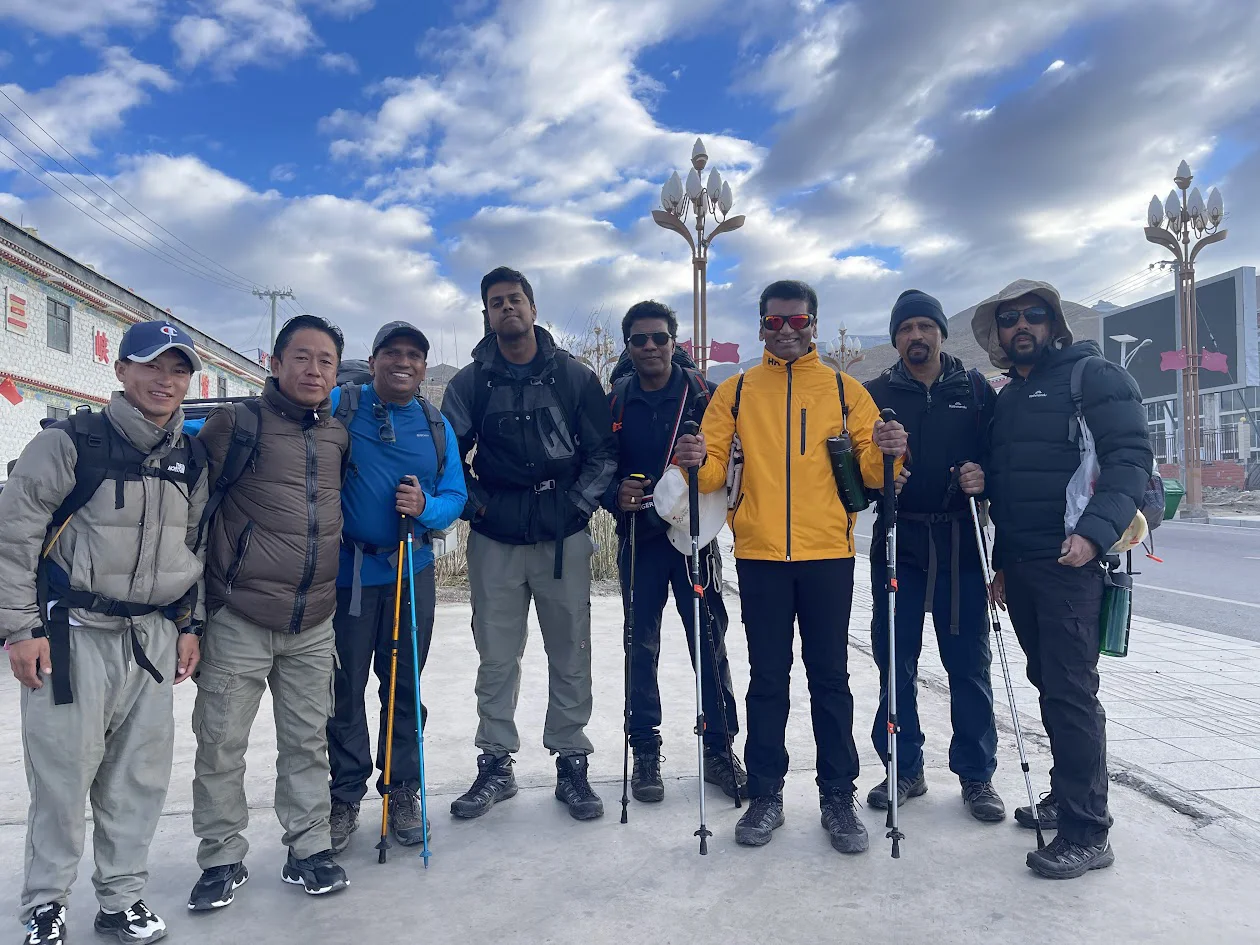
Prepare for Challenges, Protect a Sacred Place
The Dirapuk Mt Kailash trek tests your body and spirit. High altitudes and rugged landscapes challenge your stamina, while the delicate ecosystem requires respect. Prepare for these challenges and commit to protecting this sacred land to ensure a safe and meaningful pilgrimage.
Conquering Altitude and Terrain: Physical Demands of Dirapuk Trekking
Dhirapuk’s high altitude, soaring to 5,210 meters (17,093 feet), poses a risk of altitude sickness. Headaches, nausea, fatigue, and shortness of breath are common symptoms. Ascend slowly, drink plenty of fluids, and listen to your body. If altitude sickness symptoms worsen, move to a lower elevation.
The Dirupak trek trail requires physical preparation. It is rocky and uneven, with steep ascents and descents. Anticipate long days of walking and potentially challenging weather conditions. Consult your doctor before the trek, especially if you have pre-existing health conditions.
Environmental Stewardship: Preserving Dirapuk’s Fragile Ecosystem
The Tara-Puk region is a delicate ecosystem vulnerable to human impact. The increasing popularity of the Dirapuk trek calls for responsible practices to minimize our footprint.
- Leave No Trace: Carry all your trash back with you. Dispose of waste responsibly in designated areas.
- Observe Wildlife with Respect: Admire animals from a distance and avoid disturbing their natural habitat.
- Stay on the Path: Stick to designated trails to prevent soil erosion and habitat degradation.
- Conserve Water: Use water wisely and avoid polluting water sources.
- Support Local Conservation Efforts: Consider contributing to organizations working to preserve the environment around Mount Kailash.
Dirapuk Photography: Capturing Mount Kailash’s Majestic Spirit
Dirapuk reveals a photographer’s paradise, where unparalleled views of Mount Kailash await. Whether you’re a seasoned pro or a casual shutterbug, immortalizing this sacred peak’s spiritual essence and raw beauty is an unforgettable experience.
Tips for Photographing Mount Kailash from Dirapuk
Make the most of your Dhirapuk Mount Kailash photography with these tips:
- Golden Hour Magic: Harness the enchanting light of sunrise and sunset, the “golden hours.” The soft, warm light paints the mountain radiantly, creating awe-inspiring images.
- Embrace Nature’s Whims: Dirupak’s weather is unpredictable, so be ready for anything. Cloudy skies can add depth and drama, while fresh snowfall transforms the landscape into a pristine winter wonderland.
- Think Outside the Box: Explore unique angles and perspectives. Shoot from a low angle to emphasize the mountain’s scale, or find a reflective surface like a stream or lake to capture a mirrored image.
- Create Depth with Foreground: Incorporate elements like prayer flags, rocks, or even fellow trekkers into the foreground of your photos. This technique adds a sense of scale and dimension to your compositions.
- Spot the Details: While the mountain is the star, take notice of the more minor details that make Tara-Puk unique. Capture the vibrant prayer flags dancing in the wind, the weathered faces of fellow pilgrims, or the intricate details of the monastery.
- Choose the Right Tools: Wide-angle lenses are your gateway to capturing a scene’s sprawling grandeur, while telephoto lenses bring distant details into sharp focus. A tripod stabilizes your camera during long exposures or in low-light situations.
Prime Photo Spots in Dirapuk
Several locations offer stunning views of Mount Kailash:
- Dirapuk Gompa (Monastery): Ascend to the monastery’s rooftop for a panoramic mountain view, incredibly captivating during sunrise and sunset.
- Milarepa’s Cave: The hike to Milarepa’s Cave rewards you with both spiritual connection and unique perspectives of Mount Kailash.
- The North Face Viewpoint: A short walk from Dhirapuk unveils a breathtaking unobstructed view of the mountain’s north face, considered the most sacred.
- Dolma La Pass: If your tour continues on the kora, take advantage of the photo opportunities at Dolma La Pass, another remarkable vantage point for capturing Mount Kailash.
Your Guide to a Sacred Journey
Trekking to Dirapuk and around Mount Kailash is a challenge that rewards you with spiritual growth and stunning natural beauty. Thorough preparation and understanding of the route are essential for a safe and fulfilling experience.
Getting to Dhirapuk from Darchen: The Path Unfolds
The traditional Mount Kailash kora begins in Dirupak, a small town serving as the pilgrimage base. Most trekkers follow this route to Tara-Puk:
- Darchen to Tarboche: Begin with a short drive or walk from Darchen to Tarboche, where you will see a flagpole adorned with colorful prayer flags. This vibrant spot marks the official starting point of the kora.
- Tarboche to Dirapuk: The 13-kilometer (8-mile) trek to Dhirapuk typically takes 5-7 hours. The trail gently ascends through the Lha Chu Valley, revealing breathtaking views of Mount Kailash and the surrounding landscape.
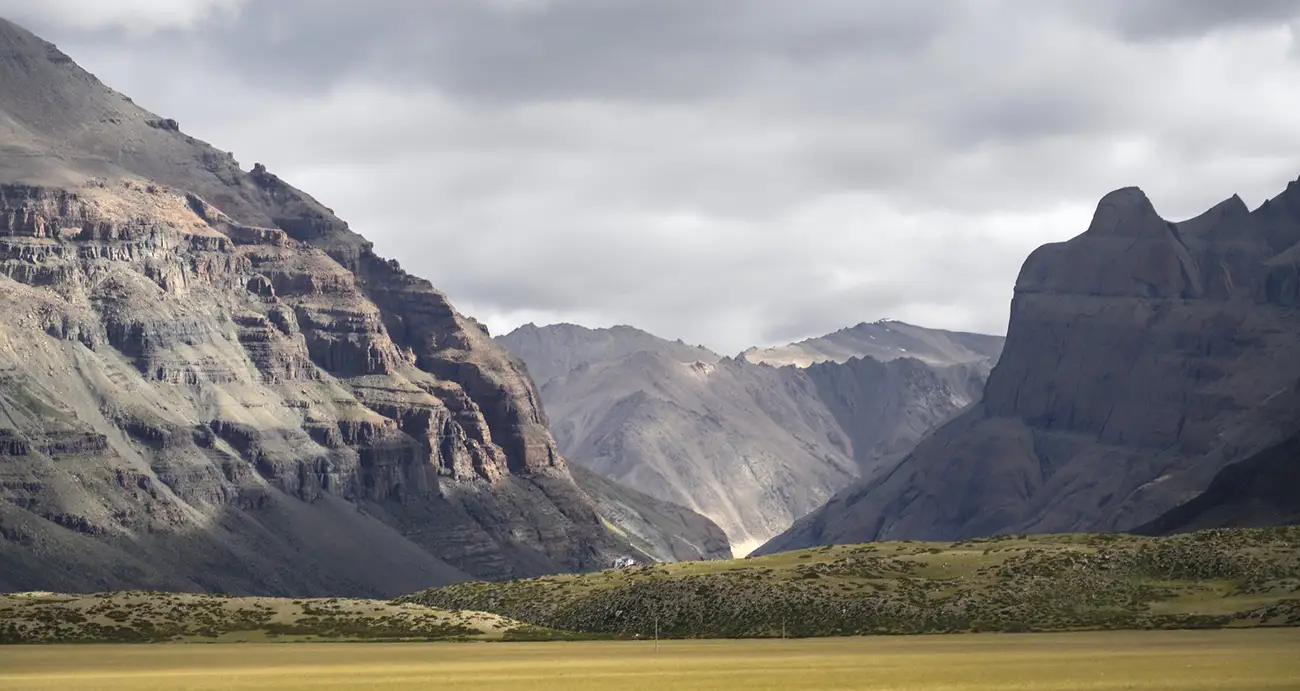
Beyond Dirapuk: The Kora Continues
After a restful night in Dirapuk’s accommodations, the kora’s most challenging leg awaits:
- Dhirapuk to Dolma La Pass: The highest point of the trek, Dolma La Pass, is 5,630 meters (18,471 feet). The steep climb demands physical stamina and mental fortitude.
- Dolma La Pass to Zutulpuk: The descent from Dolma La is equally demanding, but the reward is stunning views of the turquoise Gauri Kund Lake and the surrounding peaks.
- Zutulpuk to Darchen: The final stretch is a relatively easy 14-kilometer (8.7-mile) walk back to Darchen.
Acclimatization and Altitude Sickness: Your Health Matters
Acclimatizing to the high altitude is crucial for your safety and enjoyment. Here’s how to prepare:
- Take it Slow: Pace your ascent, giving your body the necessary time to adapt to the thinner air at higher altitudes.
- Hydrate: Maintain hydration by drinking ample water and removing dehydrating substances like alcohol and caffeine.
- Nourish Your Body: A balanced, carbohydrate-rich diet provides the energy needed for the trek.
- Listen to Your Body: Be mindful of your body! Watch for symptoms like headaches, nausea, dizziness, or shortness of breath. If you experience these, stop, rest, and consider descending to a lower altitude.
- Consider Medication: Diamox (acetazolamide) can help prevent and treat altitude sickness. Consult your doctor before taking any medication.
Essential Tips for Dirapuk Trekking
- Pack Light: Carry only essentials, as you’ll carry your gear. Consider hiring a porter or yak for heavier items.
- Weather-Ready: Pack layers of clothing to adapt to Dirapuk’s rapidly changing weather.
- Respectful Traveler: Show respect for the sacredness of Mount Kailash and the local customs.
